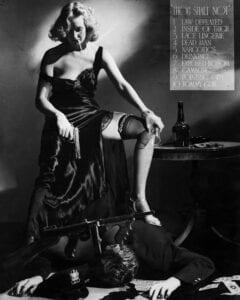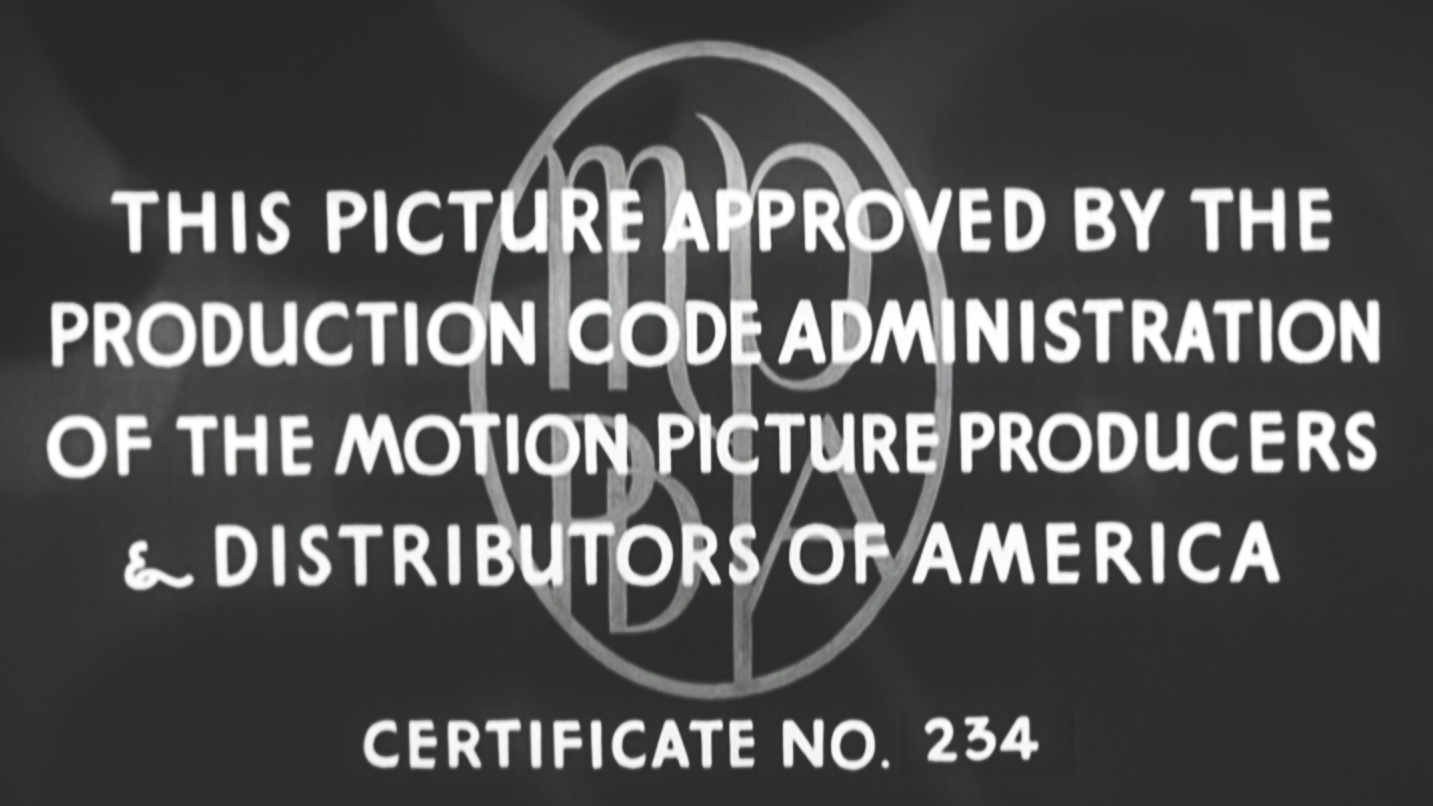
Under his guidance, the MPPDA (now known as the Motion Picture Association of America (MPAA) adopted the new Production Code in 1930, but did not really begin enforcing it until mid-1934. This all started to come about in 1922 when many risqué films combine with a series of off-screen scandals involving Hollywood stars tarnished Hollywood’s image.
At the same time, legislators in 37 states proposed nearly 100 censorship bills in 1921 in the land of free speech. This added pressure to the industry led the MPPDA to hire Hays, the Postmaster General under President Warren G. Harding and former head of the Republican National Committee in 1922. During his 25 year tenure, Hays defended the film industry from all attacks on it, and negotiated treaties to cease hostilities against it.
The following Production Code spells out what the MPPDA deemed acceptable content for motion pictures and what was not beginning in 1930.
General Principles
- No picture shall be produced which will lower the moral standards of those who see it. Hence the sympathy of the audience should never be thrown to the side of crime, wrongdoing, evil or sin.
- Correct standards of life, subject only to the requirements of drama andentertainment, shall be presented.
- Law, natural or human, shall not be ridiculed, nor shall sympathy be createdfor its violation.
Particular Applications
I—Crimes Against the Law
These shall never be presented in such a way as to throw sympathy with the crime as against law and justice or to inspire others with a desire for imitation.
- Murder
- The technique of murder must be presented in a way that will not inspire imitation.
- Brutal killings are not to be presented in detail.
- Revenge in modern times shall not be justified.
- Methods of Crime should not be explicitly presented.
- Theft, robbery, safe-cracking, and dynamiting of trains, mines, buildings, etc., should not be detailed in method.
- Arson must be subject to the same safeguards.
- The use of firearms should be restricted to essentials.
- Methods of smuggling should not be presented.
- Illegal drug traffic must never be presented.
- The use of liquor in American life, when not required by the plot or forproper characterization will not be shown.
II—Sex
The sanctity of the institution of marriage and the home shall be upheld. Pictures shall not infer that low forms of sex relationship are the accepted or common thing.
- Adultery, sometimes necessary plot material, must not be explicitly treated, or justified, or presented attractively.
- Scenes of Passion
- They should not be introduced when not essential to the plot.
- Excessive and lustful kissing, lustful embraces, suggestive postures and gestures, are not to be shown.
- In general passion should so be treated that these scenes do not stimulate the lower and baser element.
- Seduction or Rape
- They should never be more than suggested, and only when essential for the plot, and even then never shown by explicit method.
- They are never the proper subject for comedy.
- Sex perversion or any inference to it is forbidden.
- White-slavery shall not be treated.
- Miscegenation (sex relationships between the white and black races) is forbidden.
- Sex hygiene and venereal diseases are not subjects for motion pictures.
- Scenes of actual child birth, in fact or in silhouette, are never to be presented.
- Children’s sex organs are never to be exposed.
III—Vulgarity
The treatment of low, disgusting, unpleasant, though not necessarily evil, subjects should be subject always to the dictates of good taste and a regard for the sensibilities of the audience.
IV—Obscenity
Obscenity in word, gesture, reference, song, joke, or by suggestion (even when likely to be understood only by part of the audience) is forbidden.
V—Profanity
Pointed profanity (this includes the words, God, Lord, Jesus, Christ—unless used reverently—Hell, S.O.B. damn, Gawd), or every other profane or vulgar expression, however used, is forbidden.
VI—Costume
- Complete nudity is never permitted. This includes nudity in fact or in silhouette, or any lecherous or licentious notice thereof by other characters in the picture.
- Undressing scenes should be avoided, and never used save where essential to the plot.
- Indecent or undue exposure is forbidden.
- Dancing costumes intended to permit undue exposure or indecent movements in the dance are forbidden.
VII—Dances
- Dances suggesting or representing sexual actions or indecent passion are forbidden.
- Dances which emphasize indecent movements are to be regarded as obscene.
VIII—Religion
- No film or episode may throw ridicule on any religious faith.
- Ministers of religion in their character as ministers of religion should not be used as comic characters or as villains.
- Ceremonies of any definite religion should be carefully and respectfully handled.
IX—Locations
The treatment of bedrooms must be governed by good taste and delicacy.
X—National Feelings
- The use of the Flag shall be consistently respectful.
- The history, institutions, prominent people and citizenry of other nations shall be represented fairly.
XI—Titles
Salacious, indecent, or obscene titles shall not be used.
XII—Repellent Subjects
The following subjects must be treated within the careful limits of good taste:
- Actual hangings or electrocutions as legal punishments for crime.
- Third Degree methods.
- Brutality and possible gruesomeness.
- Branding of people or animals.
- Apparent cruelty to children or animals.
- The sale of women or a woman selling her virtue.
- Surgical operations
Source: “The Motion Picture Production Code of 1930,” as quoted in Leonard J. Jeff and Jerold Simmons, eds., The Dame in the Kimono: Hollywood, Censorship, and the Production Code from the 1920s to the 1960s (New York: Grove Wiedenfeld, 1990), 283–286.
